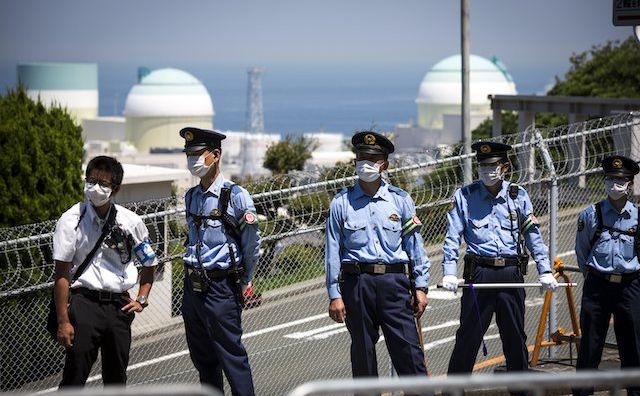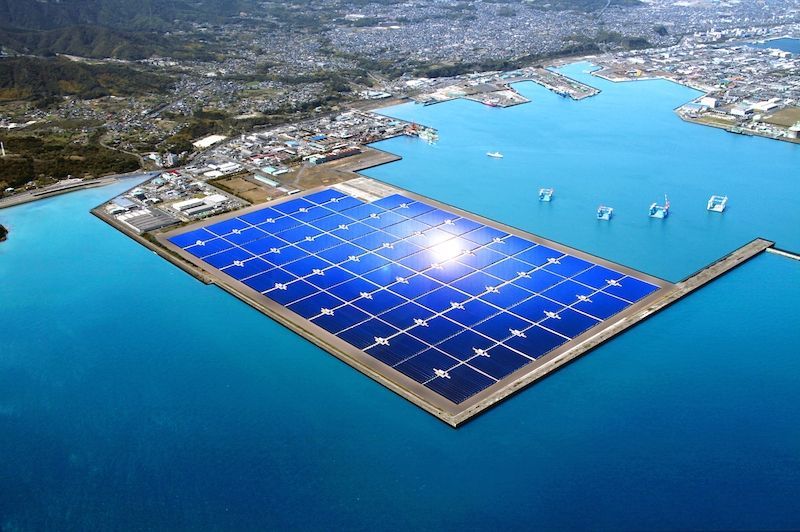Japan’s growing concern about energy security
Safe for renewables, Japan is devoid of domestic energy sources. Since its nuclear power sector has been reduced to only a minor contributor to the energy mix, the country has had no choice but to increase its imports of hydrocarbons.

In a nutshell
- The Japanese government unveiled its latest version of the country’s Strategic Energy Plan (SEP)
- The 2014 SEP focused on reducing Japan’s dependence on nuclear and fossil-burning power, and expanding renewables
- Four years later, the SEP’s newest iteration takes into account new parameters that affect the country’s energy position
Japan imports more than 90 percent of the energy it uses. No other major industrial nation is as dependent on the outside world for this critical resource. The economic and security implications of this fact are weighty for Japan, as are the consequences of the strategies that it chooses for assuring its energy supplies in the coming decades. In ways, Japan’s example may provide useful clues to other countries as well, as they recast their energy policies to adjust to the changing conditions.
Strategic Energy Plan
On July 3, 2018, the Japanese government unveiled another revised version of its Strategic Energy Plan (SEP) of 2014. Required under the country’s 2002 Basic Act on Energy, the plans set the direction for the country’s energy policy through key principles, namely: safety, energy supply security, improving economic efficiency and environmental sustainability.
In the words of Japan’s Ministry Economy, Trade and Industry, the 2014 edition of SEP was the fruit of the government’s “commitment to learning from and reflecting on the experience” of the accident at the Fukushima Daiichi Nuclear Power Station in March 2011. That plan focused on reducing Japan’s dependency on nuclear power and fossil resources, and on expanding renewable energy.
Four years later, SEP’s newest iteration takes into account new parameters that affect the country’s energy position. Also, the Paris Agreement on limiting greenhouse gas emissions, effective since 2016, requires Tokyo to look beyond 2030, to 2050.
The plan repeatedly stresses the vulnerability of Japan’s energy supply.
In the not-so-distant past, Japan’s political landscape was shaped mainly by a quick turnover of prime ministers and shortly spaced changes in administration. This has changed since Prime Minister Shinzo Abe returned to power in 2012. In the most recent general elections in October 2017, Mr. Abe secured a fourth term as head of government. In September 2018, he was confirmed as president of the ruling Liberal Democratic Party (LDP) for a new three-year term (which was made possible through a change in the statutory time limit on holding the party’s highest office). His clear confirmation as LDP leader indicated that, for the time being at least, there is no one to challenge Mr. Abe in the government or the ruling party.
It is essential to recall the track record of Shinzo Abe, as energy policies require a long-term vision, especially in a country as hard-pressed for energy as Japan. It is, however, not only the extraordinary political longevity of Mr. Abe that matters here. Since his return to the premiership in 2012, Prime Minister Abe has been pursuing several policy initiatives that his political opponents describe as “right wing” or “nationalist,” but which others welcome as a necessary turn toward a more assertive Japan. Many in Japan are beginning to see such a shift as a necessity, given the rise of China and the new winds blowing from Washington under the administration of U.S. President Donald Trump.
Geopolitics reigns supreme
There are four main issues that the revised 2018 SEP focuses on:
- security and geopolitics
- the role of nuclear power in the aftermath of Fukushima
- the changing patterns of energy production and energy consumption
- the transparency and citizen friendliness of energy policies
The plan repeatedly stresses the vulnerability of Japan’s energy supply. As an island nation, it has no direct access to neighboring grids, be they pipelines, surface transport or electricity transmission lines. Furthermore, Japan has no fossil fuel sources: neither coal, nor gas, nor oil. In all these areas, the international competition for resources has increased as industrialization progresses at a rapid pace in emerging economies – most notably, of course, in China and India. The latter nation also depends on imports to cover most of its energy needs.
Many governments are striving to gain control over energy sources beyond their national borders.
Tokyo has been watching with growing concern the overseas activities of Chinese and Indian state-owned energy enterprises. While leading Western firms conduct exploration for energy resources, exploit and ship them to the global market where they are priced and sold according to availability and demand, the state-owned energy companies of the two Asian giants have been operating with the explicit task of securing exclusive access to energy sources. Many other governments, too, have begun striving to gain control over valuable raw materials and energy sources beyond their national borders. Such strategies may be attributed to mercantilist tendencies, recently on the rise.
Resource diplomacy
Japan’s modified SEP points to the need for enhancing the reliability of energy supplies and, in this context, endorses the government’s active engagement in resource diplomacy. The plan mentions the prominent presence of the prime minister on the international scene, notably in the United States, Russia, Saudi Arabia, the UAE and Qatar.
While Mr. Abe, without doubt, has a stronger international presence than most of his predecessors, there are considerable limits, however, to what Japan’s diplomacy can achieve. In the military sphere, the country is dependent to a large degree on the U.S. The dispute over the Kuril Islands severely restricts the options with Russia. It remains unresolved and there is little prospect for a change.
When it comes to the Middle East, from where some 80 percent of Japan’s crude oil is coming, Japan’s position is precarious. It has no military presence in that region nor the operational means to secure its supply lines on the high seas. For the foreseeable future, the U.S. will remain the only party willing and capable of ensuring the freedom of the seas and intervening if transit through the bottlenecks like the Strait of Taiwan, the Strait of Malacca or the Strait of Hormuz is threatened. Of course, the decision on how Japan’s military security will be provided for in the future is a matter much broader than energy policies.
Constitutional issues, such as Article 9 or the role of the nation’s military belong in the domain of fundamental political decisions that affect the nature and identity of the Japanese state itself.

Fukushima aftershocks
The most significant part of the modified Strategic Energy Plan is devoted to the future energy mix. Japan remains committed to the environmental objectives expressed in the Paris Agreement. Equally, Japan wants to further reduce its reliance on energy that has to be sourced in politically unstable regions. The country’s traditional focus on the efficient use of energy by the consumers, private as well as corporate, will be continued with a vengeance. One of the critical questions to be addressed is the future role of nuclear power.
It will soon be eight years since a magnitude 9.0 earthquake followed by a massive tsunami crippled and destroyed the six nuclear reactors of the power plant in Fukushima Prefecture. The aftershocks of that drama are still being felt and will continue to impact Japan in the years to come.
In spite of that, the new SEP leaves a place for nuclear power in Japan’s future energy solutions. Before the Fukushima disaster, nuclear power plants were considered a pillar of Japan’s energy security and an energy source that was ecologically sounder than fossil fuels. As many as 54 nuclear power stations operated in the Japanese archipelago, providing some 30 percent of its energy.
The drama at the Fukushima Daiichi Nuclear Power Plant has profoundly shaken the Japanese people and created a wave of skepticism of nuclear power, and a sizeable opposition to it. In the aftermath of the disaster, all the country’s nuclear power stations were shut down. Even though some of them have been restarted as a result of skillful maneuvering by the government of Prime Minister Abe (who has a positive attitude toward nuclear power), there is no option to return to the energy mix that functioned before Fukushima.
The SEP of 2018, however, envisages a more significant role for nuclear power in Japan than is currently the case. It foresees more investment in nuclear technology and the management of nuclear waste. While the plan mentions renewable energy sources, such as hydro, wind, solar and geothermal power, it does not foresee a decisive enhancement of the role these energy sources will play in the coming three decades.
The latest SEP puts much emphasis on improving the consumer side of energy policies.
There is no option to exit nuclear power. No government in which the currently ruling LDP will have a say will even consider the prospect of a total replacement of nuclear power. Within the often-fractious LDP there is a strong consensus that it belongs in the energy mix. However, the modified SEP makes it abundantly clear that huge efforts need to be made in the coming years to restore the Japanese public’s confidence in nuclear power. The plan emphasizes the need for transparency and a much closer interaction of the authorities with the general public on matters related to the operation and construction of nuclear power plants. Equally, the government’s ability to respond to crises such as earthquakes and other natural disasters needs to be enhanced.
Scenarios
Japan is not only one of the wealthiest countries in the world, but it also commands leading positions in many fields of science and technological innovation. Just as importantly, it is a very cohesive society with a functioning social contract. That is why a substantial part of Japan’s energy scenario for the coming decades involves new, energy-efficient technologies and changes in consumer behavior.
These are the areas where Japan enjoys sovereignty and does not depend so utterly on other powers’ policies and the vagaries of the global market. Consequently, the latest SEP puts much emphasis on improving the consumer side of energy policies. The goal is a “hydrogen society,” which would both enhance the efficiency and ecological sustainability of energy consumption and diminish Japan’s dependence on energy supplies from abroad.
The scenarios for the years and decades to come can, of course, be subject to change if unforeseen developments occur, similar to the oil crises in the 1970s or the Fukushima disaster. In the absence of such Black Swan events, though, the pillars of Japan’s energy policies until 2050 will be:
- enhancing the security and stability of the country’s energy supply through intensified energy diplomacy
- improving its position in the competition with mercantilist powers, most notably with the energy-hungry emerging markets
- extending the geopolitical reach of Japan’s trading and investment policies with particular emphasis on energy security
- consolidating domestic energy policies that enhance self-reliance and encouraging efficient energy use through fiscal and other means
- preparing the population for the energy and raw material challenges in the 21st century
- optimizing the technological and scientific contribution that Japan can make to achieve more energy-neutral economic growth.



